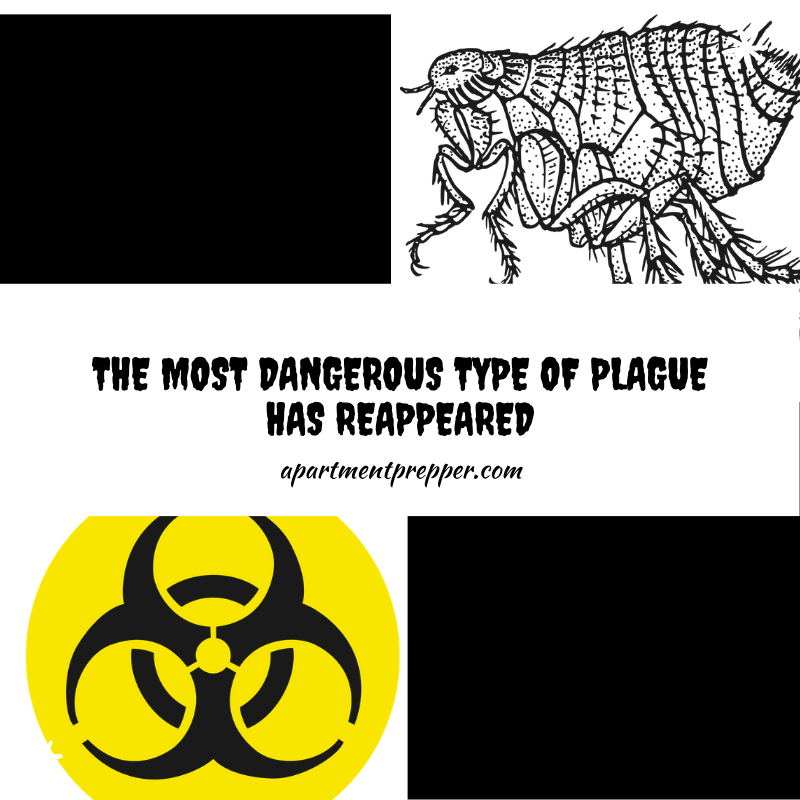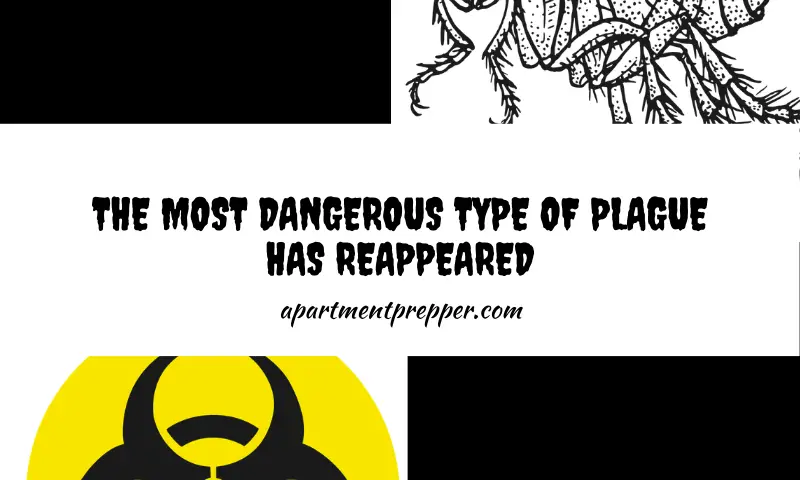This post is by Bernie Carr, apartmentprepper.com
A third case of the plague has been reported in China. I thought I’d share the story with you, not to cause a panic but to spread awareness. Being prepared means paying attention to what’s going on, and how it can potentially affect us.
What happened?
According to NPR, the first two cases was a married couple from Inner Mongolia went to a municipal hospital to be treated for plague. One patient is stable, while the other patient is in critical condition but is stable at the moment. Authorities in China are not releasing a lot of information, but assured the public on social media that chances of a plague outbreak are extremely low. The third case of the plague was a man, age 55, also from Inner Mongolia. However, authorities in China said his case was not related in any way to the couple.
What is the plague?
Back in the late middle ages, the Black Death aka the Plague caused millions of deaths, wiping out 60% of the population in Europe. According to the Centers for Disease Control (CDC), the plague is caused by the bacterium Yersinia pestis. People become infected when they are bitten by fleas that are infected by the plague hosted by animals such as rats.
Types of plague
There are three types of plague, all stemming from the Yersinia pestis bacteria:
Bubonic – lymph nodes are infected. This is the plague that was widespread in the middle ages. Symptoms include: fever, headache, chills, and weakness and one or more swollen, tender and painful lymph nodes. This is spread by infected flea bites.
Septicemic – blood infection. Symptoms are: chills, fever, extreme weakness, stomach pain, shock, and possibly bleeding into the skin and other organs. Skin and other tissues such as fingers, toes or the nose may turn black and die. Septicemic plague can result from Bubonic plague infection. This is also spread by fleas or touching infected animals.
Pneumonic – lung infection. Symptoms are: fever, headache, weakness, and pneumonia with shortness of breath, chest pain, cough, and bloody or watery mucous, leading to respiratory failure and shock. According to the CDC: “Pneumonic plague is the most serious form of the disease and is the only form of plague that can be spread from person to person (by infectious droplets).”
Unfortunately, the cases found in China are the worst type: pneumonic.
How is the plague treated?
Plague is treated with antibiotics. Plague has a high risk of death, so treatment must be started early. In addition, anyone with plague should be hospitalized. Pneumatic plague victims must be isolated as soon as possible as this can be spread to others via coughing.
There is no vaccine for the plague.
Can this happen in the U.S.?
Actually, the CDC indicates that one form of the plague, Bubonic, does occur in the U.S. from time to time.
“Plague occurs in rural and semi-rural areas of the western United States. Plague is most common in the southwestern states, particularly New Mexico, Arizona, and Colorado.”
It usually occurs where there are wild rodent populations. When people come in contact with ground squirrels, chipmunks and wood rats and other rodents, they are most at risk.
With global air travel, there is always a risk someone carrying a disease can show up anywhere. I can still recall when a person with Ebola traveled to Dallas.
Monitor developments
There is no reason to panic – just be aware but don’t be alarmed.
- Stay updated with current news.
- Check the CDC website for current outbreaks if you are traveling.
If anything develops, you can be sure we will be discussing it here.
If you found value in the article, please help us keep this site free by supporting Apartment Prepper on Patreon. Click here: https://www.patreon.com/apartmentprepper No worries if you are not able to, I’ll still keep writing!



Excellent article. Timely and with simple explanations. I can imagine a situation where people are afraid of one thing (famine) when it’s another thing entirely that will sneak up and kill them (plague). The first and most important step in prepping (it seems to me) is to be AWARE of the dangers. Thanks again.
Hi Ron, Just being aware is the first step, we may or may not have to act on it (hopefully not) Thanks for the comment!
There are more than a few cases in the United States most years, not to mention plague cases in undeveloped countries. The good news is plague hasn’t been as virulent as its reputation implies. Plague may have killed the people that were most susceptible centuries ago and left more resistant people alive to reproduce. Like leprosy, plague hasn’t been as deadly for centuries. Add in antibiotics and there’s a good chance of beating the plague.
The flu may prove to be a different story.
A, You bring up a good point, the flu is likely to be a bigger threat since it is all too common. Thanks for the comment!